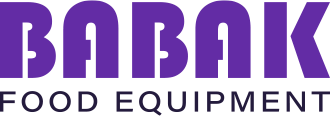Commercial deep fryers provide many benefits to your foodservice establishment. From appetizers to dessert, this commercial cooking equipment never fails to deliver all of your popular, crispy menu offerings quickly. Furthermore, these units are easy to operate and allow your kitchen team to multitask during busy services – increasing efficiency for your back of house team.
Considerations
Prior to making an investment, there are some considerations to take into account. As always, your commercial kitchen equipment needs to fulfill your business’ needs. As with most kinds of commercial cooking equipment, fryers come in a variety of configurations to do just that.
The first step is to determine how much of your menu will consist of deep fried food. From there, you’ll gain a better understanding for what type of fryer will suit your business. This is where you’ll need to consider how many tanks will be required, and the capacity of these tanks. As a very general rule of thumb, the quantity of food a fryer can produce in 1 hour is approximately double the weight in oil capacity. For example, a 50lb tank can produce an output of 100lb of food within the hour.
The next consideration is to acquire a fryer that has the appropriate temperature settings. This is where you’ll want to look for things such as recovery time between frying, heat distribution, and how big of a sediment area there is.
Also, your facility space and the actual types of fried food on your menu will help you make an informed decision when deciding on the right investment. For example, a food truck specializing in doughnuts will require a different fryer than a busy pub that serves a variety of fried appetizers and side dishes.
Gas vs Electric
Commercial gas fryers tend to be less expensive over time depending on frequency of use. These fryers heat up more quickly than electric, and have the ability to cook foods at a higher temperature. Gas connected deep fryers are commonly used in most commercial kitchen facilities. As a result, there are more options available when it comes to gas connected fryers.
Commercial electric fryers generally require a cheaper investment, but can be more costly to operate if your business ends up using the equipment more frequently than expected. Set up is quick, and offers more mobility as these units are generally smaller or operate as countertop machines. These smaller models offer faster recovery time between frying, and are generally easier to clean.
Types of Commercial Fryers
There are various types of commercial fryers and frypots available. Based on your business’ important considerations, you’ll invest in one of the following:
Floor Fryer
Commercial floor fryers are the most common type of fryers you’ll see in most quick service establishments, and high volume restaurants, hotels, and catering businesses. As the name suggests, these are standalone floor models that utilize your facility’s floor space.
Countertop Fryer
Commercial countertop deep fryers are ideal for establishments with minimal floor space. These machines provide reliable frying capacity for kitchens that require low volume production. Countertop models are generally smaller and easy to operate. As a result, they are easier to maintain over time. Commercial countertop fryers are ideal for small restaurants, food trucks, and concession stands.
Types of Frypots
The type of frypot you look for in a fryer will impact the execution of your menu and operations. This impact is due to burner placement and the “cold zone” space that is provided. The “cold zone” is the area at the bottom of the fryer where oil is not heated up to cooking temperatures. Why is this important? The lower temperature prevents burning of sediment, prolonging oil life and ensuring quality of food is up to standard.
Tube Fryer
Tube fryers come equipped with vertical burners, providing even heat distribution for a large volume and variety of food. This setup creates a large cold zone area for a longer oil shelf life in comparison to other fryers. As a result, much of the tank’s oil capacity stays in the cold zone. These fryers are more difficult to clean due to the set up of its burners.
Open Pot Fryer
Open pot fryers come equipped with external heating elements, providing reliable frying capacity for small to medium volumes of food. As the name suggests, these fryers provide an open frying area, ensuring that cleaning and maintenance is easy. Open pot fryers are generally the most affordable types of commercial fryers on the market. They are ideal for foods that create less sediment while cooking as these frypots provide less oil capacity for the “cold zone” area.
Flat Bottom Fryer
Flat bottom fryers are ideal for specific foods, such as battered meals, doughnuts, and funnel cakes. These battered treats float freely in the frypot rather than sticking to the bottom. Flat bottom fryers do not have a “cold zone” area. As a result, sediment will continue to cook and burn. This will require more frequent filtration and maintenance, as oil life is short.
Find Your Next Fryer Today!
A lot of thought and careful planning is required before you can select the appropriate fryer for your business. While many options are available, stay focused on what your restaurant requires – what’s on your menu, and how much of it will you be frying?
Find a fryer that will work for you. Browse Babak Food Equipment’s online catalog or stop by for any inquiries you may have. The team is backed by over 20 years of experience setting foodservice businesses up for success. We’re here to help!


